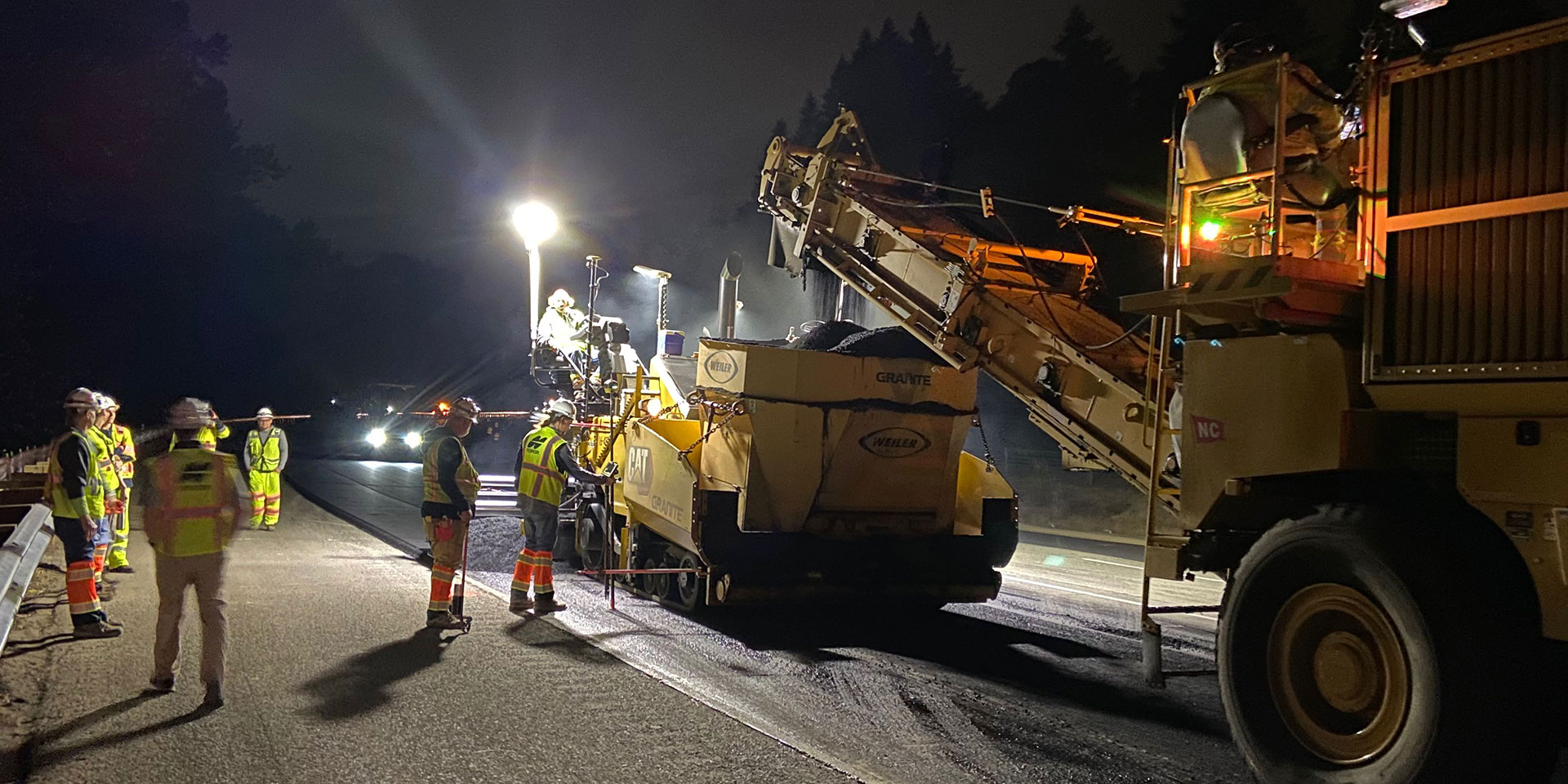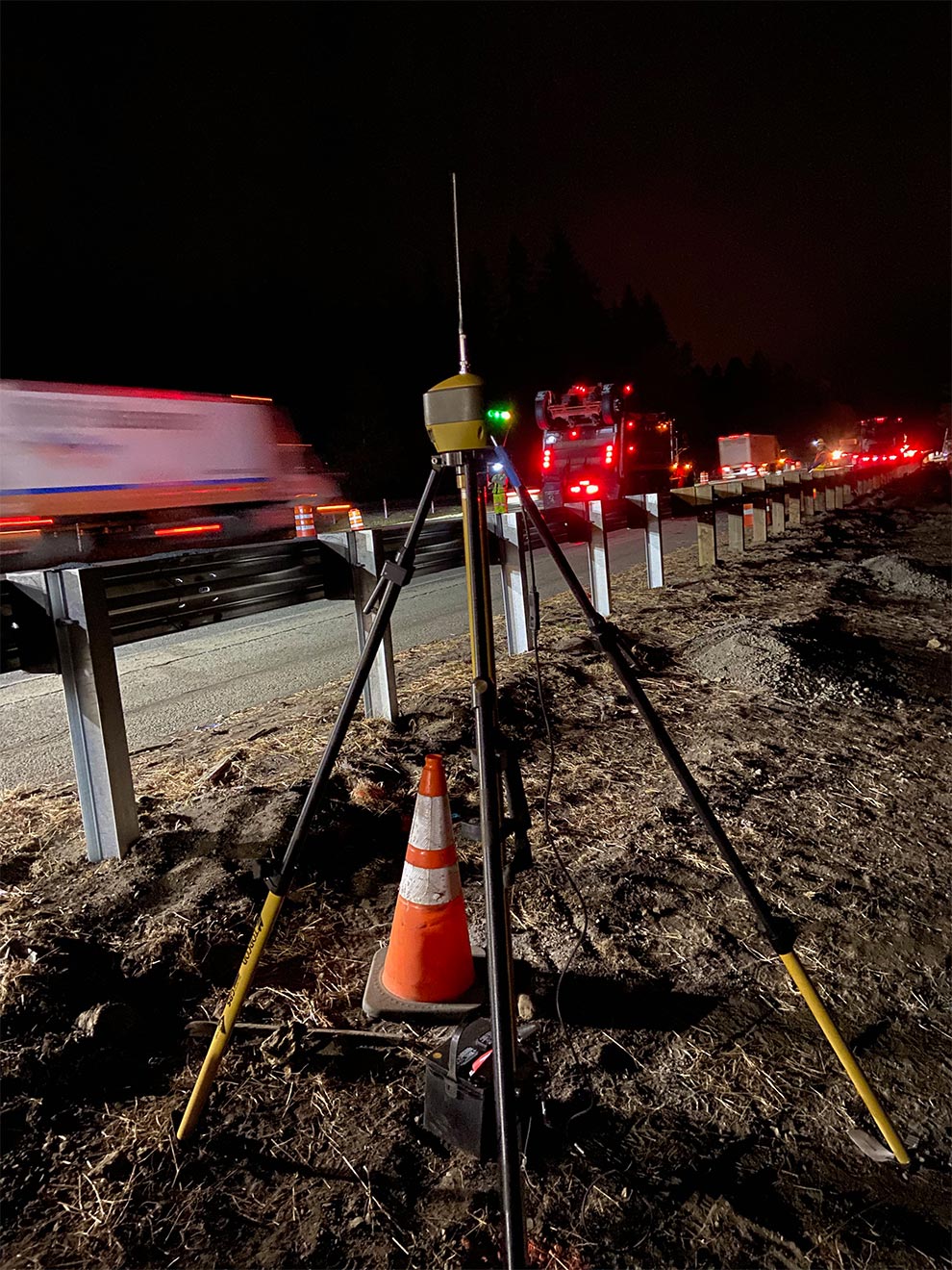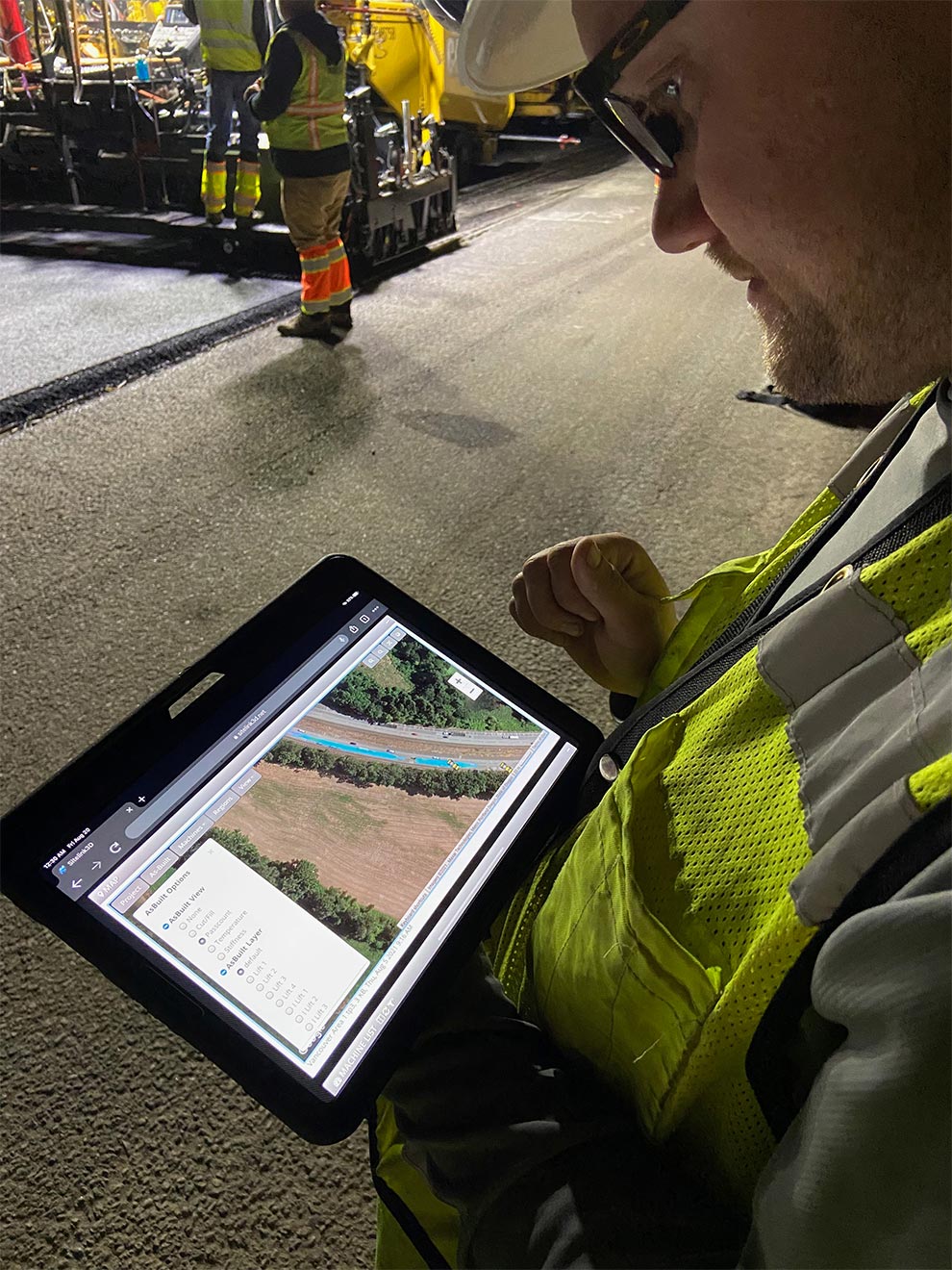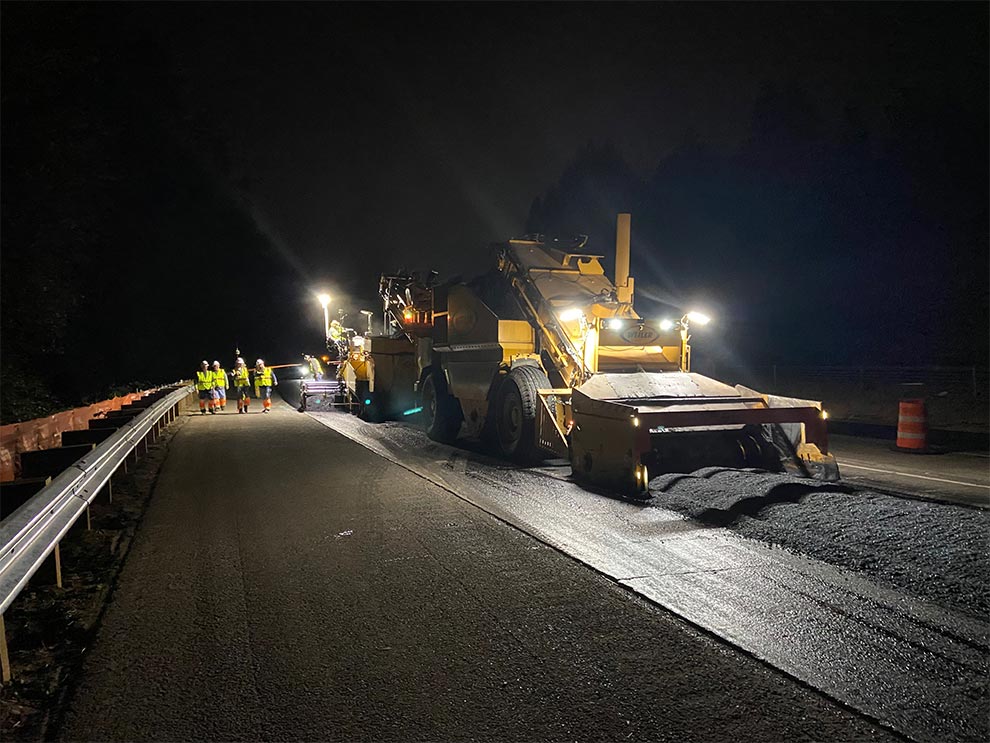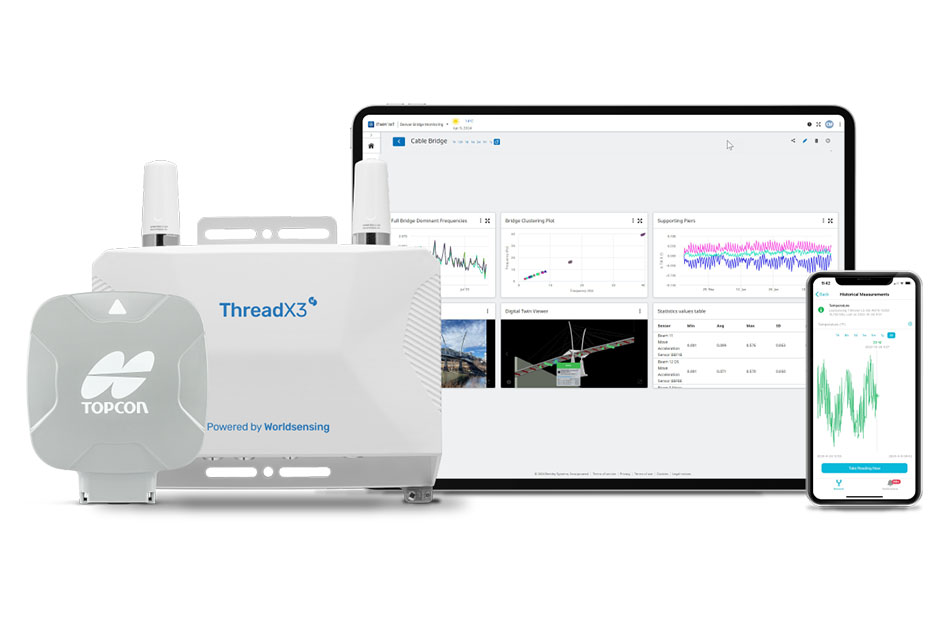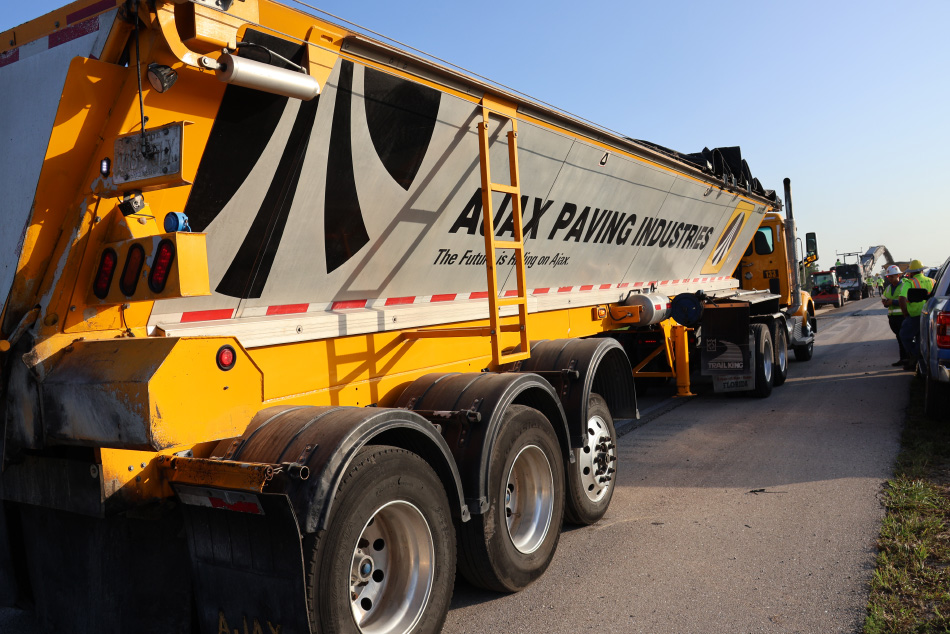As anyone involved in asphalt paving will attest, even the best laid road surface can be ruined at the hands of improper compaction. The problems caused by over- or under-rolling include but are not limited to material segregation, surface cracks and raveling. Granite is aware of these issues and, with its reputation and the satisfaction of customers like WSDOT on the line, has gone to great lengths to ensure they don’t impact their projects. One of the ways they are doing so is by employing what is actually an ideal compliment to SmoothRide, the intelligent compaction solution mentioned above.
Compaction Action
Based around the concept that a better-informed roller operator is a better-performing one, intelligent compaction uses sensors to measure the temperature of the asphalt being compacted with each pass of the machine and graphically depicts it on screen in the cab. In this way, the operator also has no doubt as to what areas they’ve already completed. The effect it has had on Granite’s compaction crews’ performance has been impressive — and measurable — according to Cantrell.
“This year we’ve been moving the IC around the state, having a number of different crews try it out doing various types of projects,” he said. “Our ultimate goal is to try to improve standard deviation, that is, maintaining uniformity, on our WSDOT work. That is the factor that most directly affects our compaction-related bonus pay. Though it varies from job to job, we’ve probably seen that number drop by about .5% already. If we can be at 1% we would be assured of getting full bonus and we are currently in the 1 ¼ and 2% range; so we’ve definitely seen an improvement. And we can trace it to our use of IC because when we’ve taken it off the rollers, we’ve seen those numbers go back up. There’s no doubt it’s helping.”
Gaining Converts
As is often the case with new technology, Cantrell said that some of their seasoned operators hesitate to embrace IC at the outset. As they use it, however, he said their attitudes begin to change.
“They are initially opposed to anything that takes them out of their comfort zone,” he said. “But then I’ll catch them looking at the screen to verify what they’ve done and haven’t done, where they’ve stopped, and so on. And that’s understandable — sometimes it’s hard to see, especially when you’re not in the breakdown roller and seeing that immense compaction at the beginning. If you’re toward the back and losing sight of roller marks, particularly at night, it can be a challenge. But the IC solution eliminates that, which wins them over.”
The combination of SmoothRide and IC at the I-5 Woodland site accomplished Granite’s goals which were to gain familiarity with the solution and, at the same time, better position them for the possibility of capturing future project incentives. Cantrell said the improvement definitely turned some heads.
“The project turned out great for us,” he said. “After completion, that IRI value of 117 had been reduced to 40 — an almost 300% improvement in smoothness. As a result, we should get about an 80% bonus for IRI on this job. While we really like the SmoothRide system, we would need to see changes in WSDOT’s specifications to allow for variable depth milling/paving and IRI bonus on more jobs. But this was a great opportunity for both organizations to see the changes SmoothRide can bring.”











